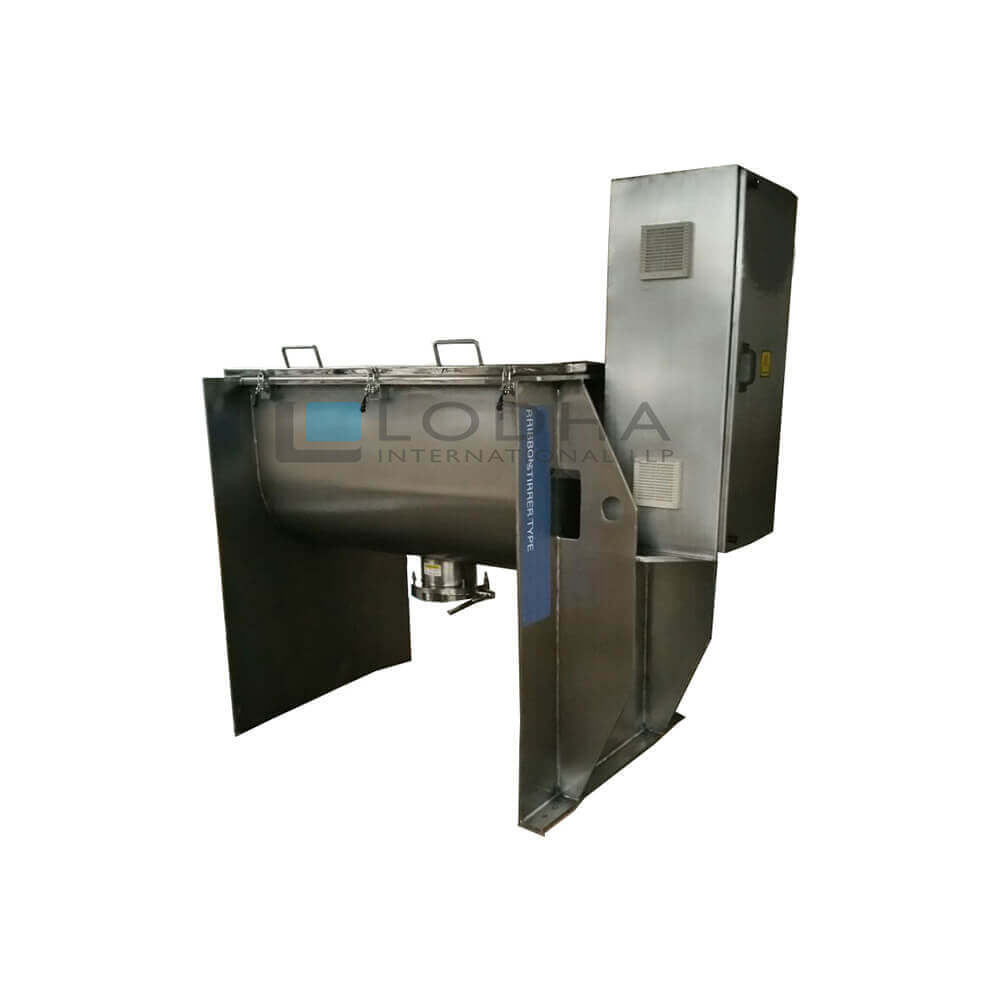Get in touch! +91 9687731331 | +91 9687631331 | info@lodhapharma.com
The Benefits of a Ribbon Blender
When choosing a ribbon blender, it's important to look for several features. These include Reliability, ease of cleaning, corrosion resistance, and cost-effectiveness. We'll discuss each of these features and their importance for you. This article focuses on the most common features that make a ribbon blender an excellent choice. But it's important to remember that the type you choose should be based on your specific needs. Keep these features in mind when comparing ribbon blenders to find the right one for your application.
Reliability of Ribbon Blender
The blending agitator of the Ribbon Blender is comprised of an inner and outer helical blade assembly. The outer helical blade throws the material into the trough, while the inner helical blade moves it to the outside. These features cause convection mixing and shearing in the material cylinder. The Ribbon Blender can be used for blending a variety of materials of different bulk densities and sizes. It allows operators to monitor the contents of the blender while it is in operation.
When choosing a Ribbon Blender, keep in mind its reliability. Modern ribbon blenders are better than their predecessors. These machines are easier to maintain and offer better performance. Modern ribbon blenders come with soft-start and overload protection features. A few other important factors to consider include the operating temperature and frequency of operation. The following are some tips on the reliability of ribbon blenders. If you are not sure whether your blender is safe to operate, consult a professional before buying one.
Easy to Clean Ribbon Blender
An easy-to-clean ribbon blender is an important feature to consider when purchasing one. In general, these blenders require minimal cleaning between changeovers. However, some manufacturers choose to install a removable agitator shaft for easy cleaning. The shaft must be able to be removed with little effort, but if it is not removable, it could get stuck. For this reason, it is important to select a ribbon blender with removable agitator shafts. After all, an easy-to-clean ribbon blender is a great way to increase efficiency and boost productivity.

Ribbon Blender Should Be Resistant to Corrosion
The stainless-steel mixing tank and blades of a Ribbon Blender provide excellent corrosion resistance, making them suitable for demanding applications. These blenders are also easy to clean and are resistant to a wide range of chemicals. The ribbons are incorporated into the blending tank so that the end product is homogeneous. The Ribbon Blender is available in a variety of capacities to suit your needs. The following are some benefits of ribbon blenders:
The Ribbon Blender should be resistant to corrosion, wear, and tear. It is available in a variety of sizes, and capacities to accommodate a wide range of applications.
Cost-effectiveness of Ribbon Blender
The blending agitator of a ribbon blender consists of an inner and outer set of helical blades. The outer blade throws the material toward the centre of the trough, while the inner blade moves the material toward the outer edge. These movements ensure a homogenous blend of materials, with the amount of material agitated varying with the particle size and bulk density of the material.
Ribbon blenders are expected to continue growing in popularity as more consumers realize the health benefits of consuming healthier foods.
Ribbon Blender Versatility
The Ribbon Blender is a precision-engineered mixer for the uniform mixing of granules, powders, and allied materials. The ribbons used in this machine are both long and thin, allowing them to blend materials with varying bulk densities. They also come with a variable-frequency drive for speed control and overload protection. For this reason, ribbon blenders are an excellent choice for mixing a wide variety of materials, including ceramic powders.
The Bottom Line
Because of the ribbons' unique design, the Ribbon Blender is capable of blending dry and wet materials without the risk of plugging. Its system is strategically positioned to ensure that the material is completely discharged without any residue. The ribbon blender's central shaft rotates two ribbons that force the material in opposite directions. These ribbons have specific geometry to match the feed properties of each material. The result is a homogeneous, powdery product that is easy to store and use.

